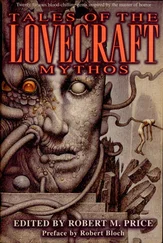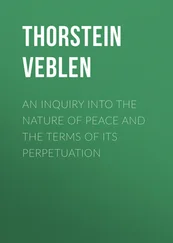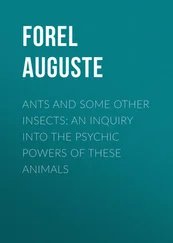Robert Pirsig - Lila. An Inquiry Into Morals
Здесь есть возможность читать онлайн «Robert Pirsig - Lila. An Inquiry Into Morals» весь текст электронной книги совершенно бесплатно (целиком полную версию без сокращений). В некоторых случаях можно слушать аудио, скачать через торрент в формате fb2 и присутствует краткое содержание. Жанр: Современная проза, на английском языке. Описание произведения, (предисловие) а так же отзывы посетителей доступны на портале библиотеки ЛибКат.
- Название:Lila. An Inquiry Into Morals
- Автор:
- Жанр:
- Год:неизвестен
- ISBN:нет данных
- Рейтинг книги:3 / 5. Голосов: 1
-
Избранное:Добавить в избранное
- Отзывы:
-
Ваша оценка:
- 60
- 1
- 2
- 3
- 4
- 5
Lila. An Inquiry Into Morals: краткое содержание, описание и аннотация
Предлагаем к чтению аннотацию, описание, краткое содержание или предисловие (зависит от того, что написал сам автор книги «Lila. An Inquiry Into Morals»). Если вы не нашли необходимую информацию о книге — напишите в комментариях, мы постараемся отыскать её.
Lila. An Inquiry Into Morals — читать онлайн бесплатно полную книгу (весь текст) целиком
Ниже представлен текст книги, разбитый по страницам. Система сохранения места последней прочитанной страницы, позволяет с удобством читать онлайн бесплатно книгу «Lila. An Inquiry Into Morals», без необходимости каждый раз заново искать на чём Вы остановились. Поставьте закладку, и сможете в любой момент перейти на страницу, на которой закончили чтение.
Интервал:
Закладка:
Phædrus saw that not only a man recovering from a heart attack but also a baby gazes at his hand with mystic wonder and delight. He remembered the child Poincare referred to who could not understand the reality of objective science at all but was able to understand the reality of value perfectly. When this reality of value is divided into static and Dynamic areas a lot can be explained about that baby’s growth that is not well explained otherwise.
One can imagine how an infant in the womb acquires awareness of simple distinctions such as pressure and sound, and then at birth acquires more complex ones of light and warmth and hunger. We know these distinctions are pressure and sound and light and warmth and hunger and so on but the baby doesn’t. We could call them stimuli but the baby doesn’t identify them as that. From the baby’s point of view, something, he knows not what, compels attention. This generalized something, Whitehead’s dim apprehension, is Dynamic Quality. When he is a few months old the baby studies his hand or a rattle, not knowing it is a hand or a rattle, with the same sense of wonder and mystery and excitement created by the music and heart attack in the previous examples.
If the baby ignores this force of Dynamic Quality it can be speculated that he will become mentally retarded, but if he is normally attentive to Dynamic Quality he will soon begin to notice differences and then correlations between the differences and then repetitive patterns of the correlations. But it is not until the baby is several months old that he will begin to really understand enough about that enormously complex correlation of sensations and boundaries and desires called an object to be able to reach for one. This object will not be a primary experience. It will be a complex pattern of static values derived from primary experience.
Once the baby has made a complex pattern of values called an object and found this pattern to work well he quickly develops a skill and speed at jumping through the chain of deductions that produced it, as though it were a single jump. This is similar to the way one drives a car. The first time there is a very slow trial-and-error process of seeing what causes what. But in a very short time it becomes so swift one doesn’t even think about it. The same is true of objects. One uses these complex patterns the same way one shifts a car, without thinking about them. Only when the shift doesn’t work or an object turns out to be an illusion is one forced to become aware of the deductive process. That is why we think of subjects and objects as primary. We can’t remember that period of our lives when they were anything else.
In this way static patterns of value become the universe of distinguishable things. Elementary static distinctions between such entities as before and after and between like and unlike grow into enormously complex patterns of knowledge that are transmitted from generation to generation as the mythos, the culture in which we live.
This, Phædrus thought, was why little children are usually quicker to perceive Dynamic Quality than old people, why beginners are usually quicker than experts, why primitive people are sometimes quicker than those of advanced cultures. American Indians are exceptionally skilled at holding to the ever-changing center of things. That is the real reason they speak and act without ornamentation. It violates their mystic unity. This moving and acting and talking in accord with the Great Spirit and almost nothing else has been the ancient center of their lives.
Their term manito is often used interchangeably with God by whites who usually think all religion is theistic and by Indians themselves who don’t make a big deal out of any verbal distinctions. But as David Mandelbaum noted in his book The Plains Cree, The term manito primarily referred to the Supreme Being but also had many other usages. It was applied to manifestations of skill, fortune, blessing, luck, to any wondrous occurrence. It connoted any phenomenon that transcended the run of everyday experience.
In other words, Dynamic Quality.
With the identification of static and Dynamic Quality as the fundamental division of the world, Phædrus felt that some kind of goal had been reached. This first division of the Metaphysics of Quality now covered the spectrum of experience from primitive mysticism to quantum mechanics. What remained for Phædrus to do next was fill in the gaps as carefully and methodically as he could.
In the past Phædrus' own radical bias caused him to think of Dynamic Quality alone and neglect static patterns of quality. Until now he had always felt that these static patterns were dead. They have no love. They offer no promise of anything. To succumb to them is to succumb to death, since that which does not change cannot live. But now he was beginning to see that this radical bias weakened his own case. Life can’t exist on Dynamic Quality alone. It has no staying power. To cling to Dynamic Quality alone apart from any static patterns is to cling to chaos. He saw that much can be learned about Dynamic Quality by studying what it is not rather than futilely trying to define what it is.
Static quality patterns are dead when they are exclusive, when they demand blind obedience and suppress Dynamic change. But static patterns, nevertheless, provide a necessary stabilizing force to protect Dynamic progress from degeneration. Although Dynamic Quality, the Quality of freedom, creates this world in which we live, these patterns of static quality, the quality of order, preserve our world. Neither static nor Dynamic Quality can survive without the other.
If one inserts this concept into a case such as that of the brujo in Zuni, one can see the truth of it. Although the Dynamic brujo and the static priests who tortured him appeared to be mortal enemies, they were actually necessary to each other. Both types of people had to exist. If most of Zuni went around drunk and bragging and looking in windows, that ancient way of life could never have lasted. But without wild, disreputable outcasts like the brujo, ready to seize on any new outside idea and bring it into the community, Zuni would have been too inflexible to survive. A tension between these two forces is needed to continue the evolution of life.
The beauty of that old Indian, Phædrus thought, is that he seemed to have understood this. He wasn’t interested in just knocking things down and walking off into the sunset with some kind of a moral victory. The old priestly ways would have come back and all his suffering would have been wasted. He didn’t do that. He stayed around the rest of his life, became a part of the static pattern of the tribe, and lived to see his reforms become a part of the tribe’s ongoing culture.
Slowly at first, and then with increasing awareness that he was going in a right direction, Phædrus' central attention turned away from any further explanation of Dynamic Quality and turned toward the static patterns themselves.
10
Lila sat on the cabin berth and thought about the bad taste in her mouth from the coffee. There was something wrong with it. It was that rubbery taste in the water. That was bad too. It was in the coffee too.
She didn’t feel good. Her head still hurt. From last night. How much had she spent? she wondered. She didn’t have much money left. Then she remembered: he paid for most of it… Her head really hurt bad.
God, she was hungry. At least she’d get him to buy her a big steak tonight… with mushrooms… and onions… Oh, she could hardly stand it!
Everything was all changed again. Yesterday she was going to Florida on the Karma. Now she was on this boat. Her life was really getting worse and worse. She knew it. She used to at least plan things a little. Now everything happened without any plans at all.
Читать дальшеИнтервал:
Закладка:
Похожие книги на «Lila. An Inquiry Into Morals»
Представляем Вашему вниманию похожие книги на «Lila. An Inquiry Into Morals» списком для выбора. Мы отобрали схожую по названию и смыслу литературу в надежде предоставить читателям больше вариантов отыскать новые, интересные, ещё непрочитанные произведения.
Обсуждение, отзывы о книге «Lila. An Inquiry Into Morals» и просто собственные мнения читателей. Оставьте ваши комментарии, напишите, что Вы думаете о произведении, его смысле или главных героях. Укажите что конкретно понравилось, а что нет, и почему Вы так считаете.











